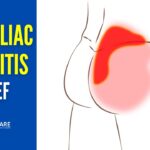How to know if you’re at risk of fatty liver disease: Diagnosis, prevention and treatment
Non-alcoholic fatty liver disease (NAFLD) is a medical condition characterized by the accumulation of excess fat in the liver cells, which is not caused by alcohol consumption.
The disease ranges in severity from simple fat accumulation (steatosis) to more advanced stages, including non-alcoholic steatohepatitis (NASH), fibrosis, and even cirrhosis, which can be life-threatening.
The incidence of NAFLD in the United States has been on the rise, reflecting broader trends in obesity and metabolic syndrome. Estimates suggest that approximately 25% to 30% of the U.S. adult population has NAFLD. The prevalence can be even higher among individuals with type 2 diabetes or obesity.
This means that one out of every four people will suffer from NAFLD, which often remains undiagnosed in the early stages of the disease. This condition is a real concern because it’s not only the most common liver disorder in the United States but also a leading cause of liver transplants.
Moreover, NAFLD is associated with an increased risk of cardiovascular diseases, which are the leading cause of death worldwide.
What causes fatty liver disease?
NAFLD is one of the most common forms of chronic liver disease and is often associated with conditions such as obesity, type 2 diabetes, and metabolic syndrome. These health issues can significantly increase your risk of developing the disease.
How does NAFLD impact your health?
Here’s why fatty liver disease is more than just extra fat storage and how it could be affecting your overall health if ignored.
NAFLD is often asymptomatic in its early stages but can lead to liver inflammation, elevated liver enzymes, liver scarring, and ultimately liver failure if not managed appropriately.
Immediate impact
Long-term consequences
Additional risks
Other health risks associated with non-alcoholic fatty liver disease include gallstones, memory loss, kidney disease, and overall metabolic decline.
NAFLD is more than just an extra fat storage problem — it’s a serious condition with severe metabolic, health span and life expectancy implications. The sooner you catch it or take preventive measures, the better.
How to diagnose NAFLD?
1. Initial evaluation
2. Imaging studies
3. Advanced testing
4. Additional tests
Additional tests might be needed to rule out other liver diseases, such as chronic hepatitis C or alcoholic liver disease, especially if initial tests are inconclusive.
5. Disease monitoring
Once NAFLD is diagnosed, further tests may be conducted periodically to monitor liver function and assess progression of the disease, especially if treatment interventions are initiated.
It’s crucial to consult healthcare professionals for diagnosis and management, as fatty liver disease can progress to more severe conditions if not adequately managed.
Liver disease prevention, supplement support and detox
If you have no other medical conditions, you can control or even reverse the fat storage buildup in your liver and improve organ function through simple lifestyle changes and nutritional supplementation.
Special treatment is generally required if the disease has progressed and you’re suffering from other chronic health issues.
PART 1 – Lifestyle changes that support liver health
PART 2 – Treatment & medication
IMPORTANT: It’s crucial to work closely with healthcare providers, including hepatologists, dietitians, and other specialists, for a comprehensive approach to treating NAFLD.
Disclaimer: Any information provided here is for educational purposes only and is not intended to substitute professional medical care.
PART 3 – Supplements for natural prevention of chronic liver disease
STEP 1: A semi-annual liver cleanse and detox as part of preventive care.
STEP 2: Fermented multivitamin supplements will ensure sufficient levels of choline, vitamin E and other vitamins that are important in preventing NAFLD. Fermented vitamins are known to absorb better, be gentle on the stomach and have increased nutrient bioavailability and positive health benefits.
STEP 3: Healthy fats and omega-3 fatty acids are another important element of NAFLD prevention. Regular medical check-ups, including blood tests and imaging studies, can help monitor progression of the disease and effectiveness of treatment interventions.
This content was originally published here.




















